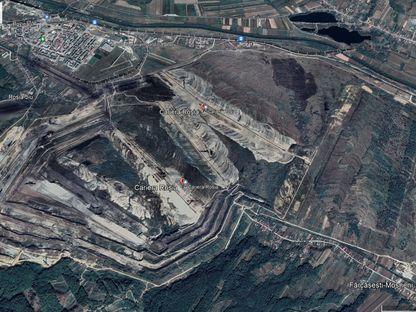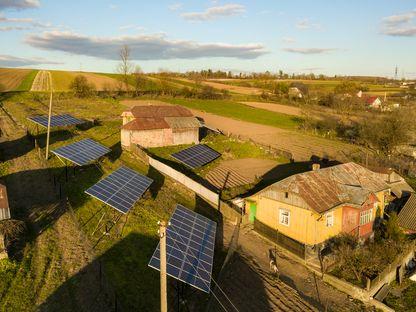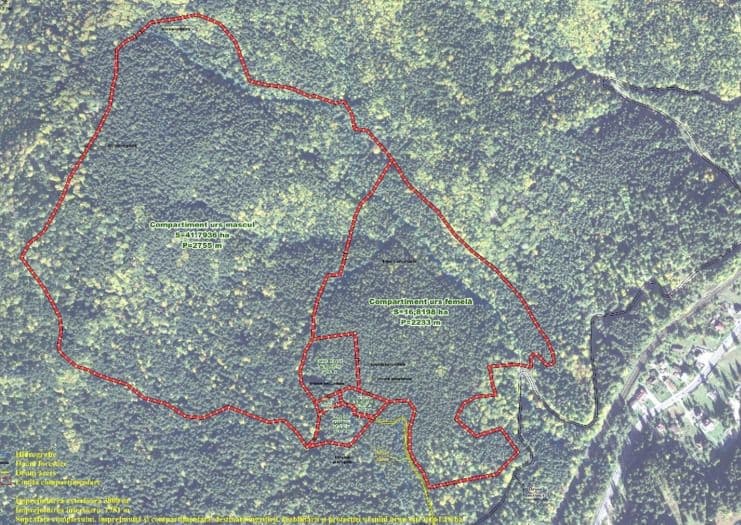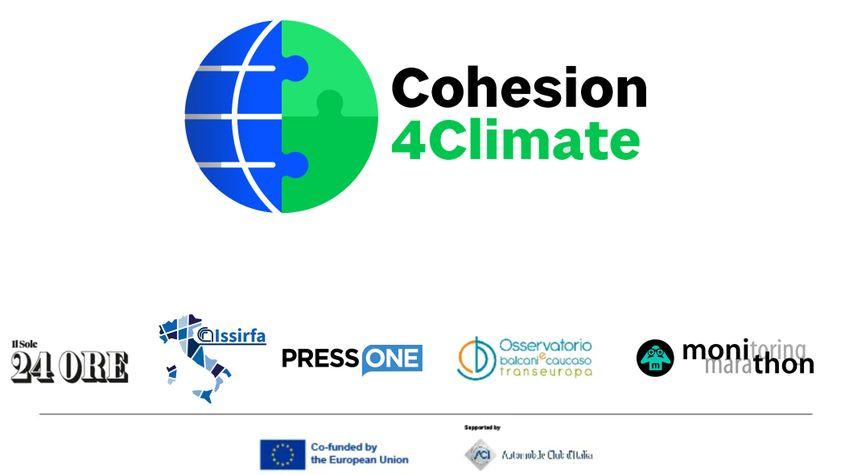The Romanian state, unable to count its bears and build a sanctuary to care for them. 11 million euros wasted on promises Photo: Ovidiu Iordachi / Inquam Photos
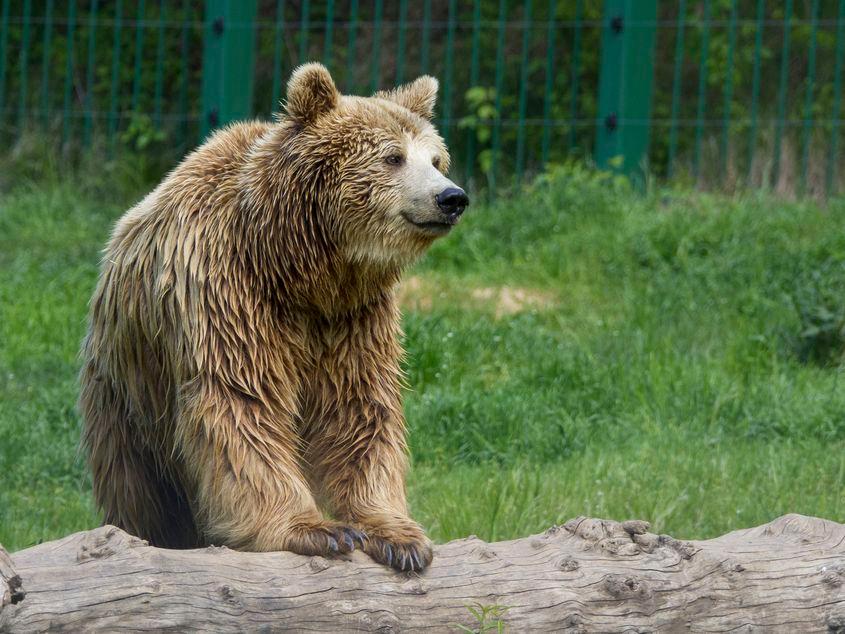
The Romanian state, unable to count its bears and build a sanctuary to care for them. 11 million euros wasted on promises Photo: Ovidiu Iordachi / Inquam Photos
31/03/2025
The Romanian State, Unable to Count Its Bears and Build Them a Sanctuary. ”The Work Is 15% Completed”
In December 2023, we were supposed to have a figure on the brown bear population in Romania, following a scientific census carried out with European funds. We still don’t have this figure, because the project has been granted an extension and has entered a new funding framework.
- The Ministry of the Environment has received 11 million euros of European funding for the project “Implementation of the National Action Plan for the Conservation of the Brown Bear Population in Romania”, which should have been ready in December 2023.
- The project included several activities, including a scientific census of brown bears in Romania and the construction of a facility to care for them.
- Nearly two years after the project was supposed to be finalized, there are no exact figures on the number of bears in Romania, nor do we have the facility that would have housed around 100 mammals.
- The ministry claimed delays due to the coronavirus pandemic and the invasion of Ukraine and asked for the project to be phased, i.e. continued in the new financial year. What does that mean? Instead of doing new projects, some of the funds will be used to finalize this one.
- Sources consulted by PressOne also claim that the objective of the project, “to determine the size of the population and establish the minimum number of bears at the national level” will not result in a useful management tool, as promised.
The exact number of bears in Romania is still a mystery
„How many bears are there in Romania?” is a question no public authority can answer with certainty. The national action plan for the conservation of the brown bear population in Romania, adopted as early as 2018 following another program carried out with European funds, stipulates that the monitoring of „the brown bear population will be carried out periodically, every 6 years, at a national level.”
In April 2023, the minister of the environment at the time, Tánczos Barna, presented the results of a study estimating the brown bear population in Romania to be „between 7,536 and 8,093 specimens”. However, the results of the study were questioned by specialists in the field, who complained about the lack of transparency regarding the methodology used or the lack of clear data on, for example, the density of the bear population.
This did not prevent Tánczos Barna from signing an order on his last day at the ministry approving the brown bear prevention quotas, thus giving the go-ahead to shoot more than 400 bears in order to limit the incidence of human-bear conflicts.
In a previous article, PressOne showed how the minister's decision benefited private and state managers of hunting funds, who were making business plans even before the order was officially signed.
European funds for bear census
The scientific census foreseen by the project „Implementation of the national action plan for the conservation of the brown bear population in Romania” should have shed some light on the uncertain situation regarding the number of bears in Romania.
"This is a topic that concerns us all these days, namely the bear population and its interaction with humans. Through European funds, we are solving a problem that has been dragging on for several years. In 2016, the decision was taken to ban bear hunting and the presumption at that time was that there was a danger of over-hunting. Another presumption was that the bear population assessments were not based on very solid figures, and a census was to be carried out on a scientific basis," said the Minister of European Investments and Projects, Cristian Ghinea, in July 2021.
Mulți ne citesc, puțini ne susțin. Fără ajutorul tău, nu putem continua să scriem astfel de articole. Cu doar 5 euro pe lună ne poți ajuta mai mult decât crezi și poți face diferența chiar acum!
With a total value of around €11 million (more than 53 million lei), with the money coming from the 2014-2020 Large Infrastructure Operational Program, the project aimed to „maintain the current conservation status of the brown bear population and its habitat in the long term,” according to an answer provided by the environment ministry.
As the main beneficiary of the project, the ministry envisaged several activities to achieve the objectives, the most important of which were „the monitoring and genetic estimation of the brown bear population” and "the establishment of a facility for the care, rehabilitation and protection of the brown bear”.
According to the original plan, the project should have been completed by December 31, 2023, when all of the above activities should have been checked off the list. This did not happen, and the project was phased for the 2021-2027 funding period, available through the Sustainable Development Program.
To avoid losing the funding completely, the state promised to finish it in the current fiscal framework. What does that mean? That instead of funding new environmental projects, some of the funds will be used to complete it.
The pandemic and the invasion of Ukraine are blamed for delays
Coal Mining Expansion Leads to Deforestation: Over 470 Hectares of Forest Cut Down in Gorj, Romania
Over the past six years, more than 470 hectares of national forest land have been allocated by the government, without compensation, to the Oltenia Energy Complex (CEO) for the expansion or opening of new coal mines.
The not-so-green Romania. The state delays settlements for photovoltaic panels by 2 years
PressOne reviews the main dysfunctions in the production, consumption and distribution of energy from renewable sources, as revealed by discussions with consumers and data provided by official sources at the request of our editorial office.
In a response to PressOne, the environment ministry claims that currently, „the implementation percentage of the project is about 80%.”
"The start of activities coincided with the pandemic generated by Covid 19. This prompted a re-planning of activities. For example, the training activities of the staff for the collection of field samples was carried out with some delay," the ministry claims.
They claim that another reason for the delays were the public calls for executing the project.
Un newsletter pentru cititori curioși și inteligenți.
Sunt curios
„The procurement of the equipment was a lengthy process, taking into account, on the one hand, the legal deadlines for the procurement procedure and, on the other hand, the various issues that arose: the legal challenges during the procedure, additional provisions extending the delivery deadlines for the equipment, and the socio-economic impact of the war in Ukraine,” the ministry's representatives added.
Whilst it can boast about certain results achieved in the first phase of the project (such as an app for collecting and inventorying genetic samples collected from the field, a methodology for taking samples from the field, optimizing the protocols of work in the genetics laboratory, training 400 people to collect samples, 1140 electric fence systems or 150 photo/video systems to monitor electric fence systems), the Ministry of Environment acknowledges in the same response that the extension of the project completion deadline is caused by the fact that two objectives were not met.
„Determining the population size and establishing the minimum number of bears at the national level through genetic studies” and „Strengthening the institutional capacity by establishing a facility for the raising, care, rehabilitation and protection of the brown bear species”.
The collection of genetic samples is still ongoing
Allegedly, approximately 24,000 genetic samples (feces and hair) have been collected from different areas across the country for the bear population census.
„Currently, 98% of the work of collecting genetic samples has been completed and is continuing alongside the analysis and interpretation of data in the animal genetics laboratory at INCDS Marin Drăcea,” says the response they have sent us.
According to Mihai Pop, a PhD in brown bear conservation and representative of the Association for the Conservation of Biological Diversity, the genetic analysis of bear specimens is very useful, but the stated objective is not the most appropriate.
"Identifying the minimum number of bears in the country does not give you a useful management tool. You know you have a minimum and that's about it. But what is the maximum? What is the average? Where do you have that minimum and what is its distribution in the territory? It's like saying that you have a car for sale that costs 1,000 euros, but you don't give any information about its brand, model or year. The result will not be useful", says the expert.
When asked how the bear population could be monitored as close as possible to an ideal model, Mihai Pop argues that, given the way Romania looks, „test areas” would be more appropriate.
"Ideally, you would have areas from which you collect a thousand samples each, somewhere between 10,000 and 12,000 samples. Maybe 4-5 in the Carpați Orientali, 3-4 in the Carpați Meridionali and 2-3 in the Apuseni Mountains.
You should have 10 to 12 such areas in Romania and use them to make more complex statistical models over a longer period of time. Because it is totally inefficient to analyze randomly collected samples from such a large area as the bear habitat in Romania", explains Mihai Pop, an expert in brown bear conservation.
When are the results of the bear census carried out as part of the project supposed be made public? we asked the environment ministry. The answer we received was: „Imminently”.
The facility for taking care of the bears is 15% completed
Another goal that was due to be completed in December 2023 is the construction of a bear care facility. Located in Brașov county, the sanctuary would house about 100 brown bears that can no longer be reintegrated into their natural habitat.
Area of the bear care complex, taken from a press release issued by the communication team of the EU-funded project.
Currently, according to the response provided to PressOne, the construction work for the establishment of the complex is 15% completed and „the equipment that will be necessary for the rehabilitation, care and protection of the brown bear (funiculars and drones for feeding, transportation cage)” has been purchased.
From the project budget, more than €2 million has been earmarked just for the construction of the complex and the necessary equipment.

Avem nevoie de ajutorul tău!
Mulți ne citesc, puțini ne susțin. Asta e realitatea. Dar jurnalismul independent și de serviciu public nu se face cu aer, nici cu încurajări, și mai ales nici cu bani de la partide, politicieni sau industriile care creează dependență. Se face, în primul rând, cu bani de la cititori, adică de cei care sunt informați corect, cu mari eforturi, de puținii jurnaliști corecți care au mai rămas în România.
De aceea, este vital pentru noi să fim susținuți de cititorii noștri.
Dacă ne susții cu o sumă mică pe lună sau prin redirecționarea a 3.5% din impozitul tău pe venit, noi vom putea să-ți oferim în continuare jurnalism independent, onest, care merge în profunzime, să ne continuăm lupta contra corupției, plagiatelor, dezinformării, poluării, să facem reportaje imersive despre România reală și să scriem despre oamenii care o transformă în bine. Să dăm zgomotul la o parte și să-ți arătăm ce merită cu adevărat știut din ce se întâmplă în jur.
Ne poți ajuta chiar acum. Orice sumă contează, dar faptul că devii și rămâi abonat PressOne face toată diferența. Poți folosi direct caseta de mai jos sau accesa pagina Susține pentru alte modalități în care ne poți sprijini.
Vrei să ne ajuți? Orice sumă contează.
Share this


